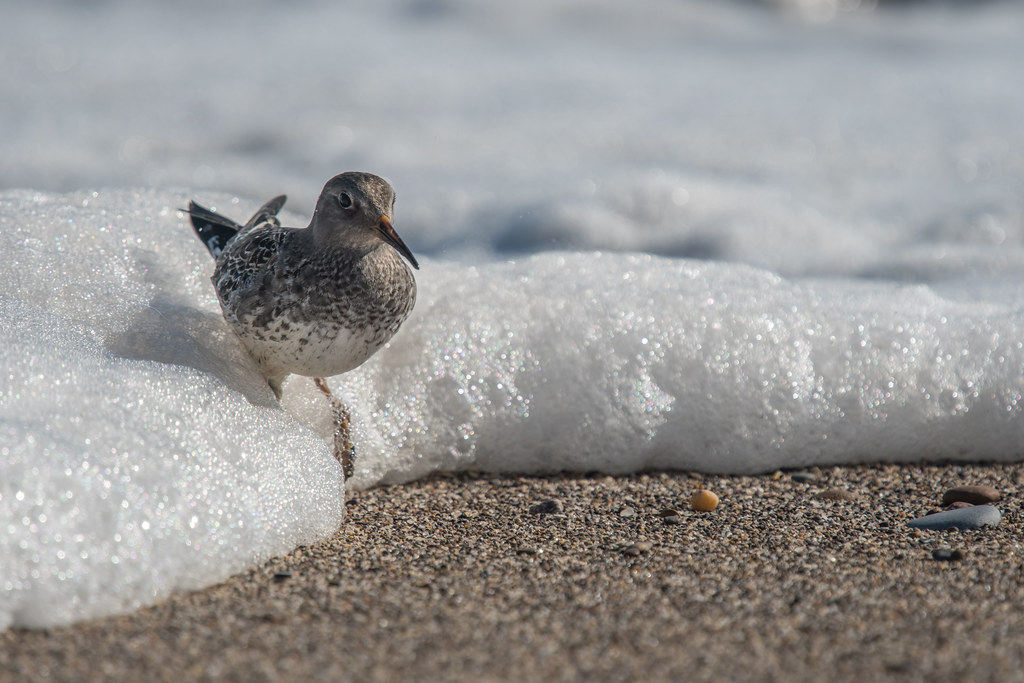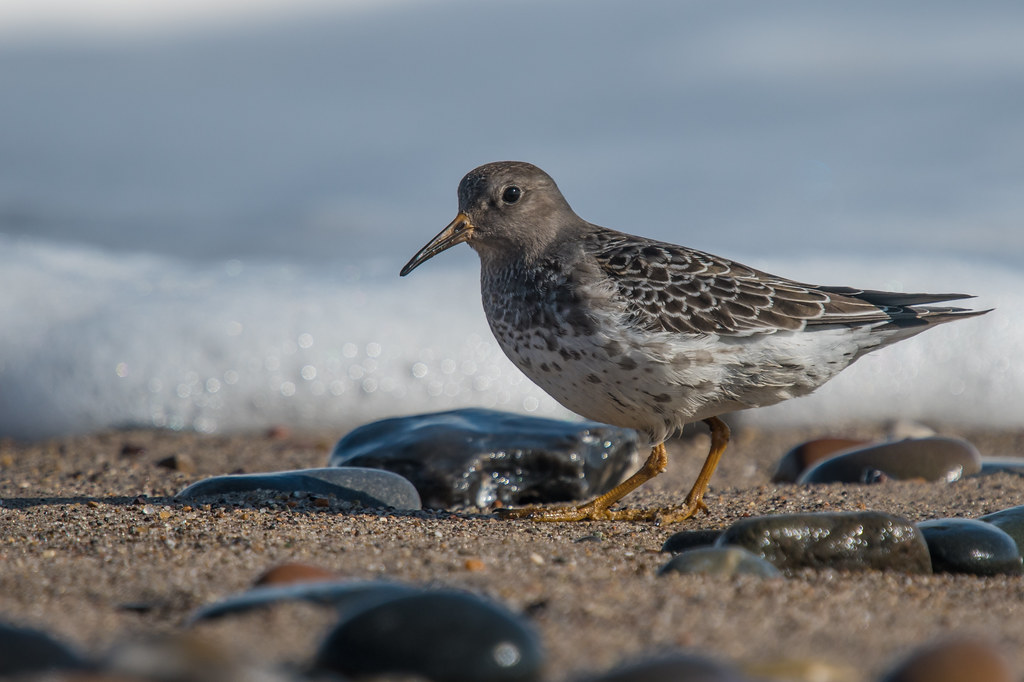
Tim writes: Spurn peninsula in East Yorkshire has been breached by the sea so the point is now an island at high tide. As I walked back along the breach in late September I spotted just a single wader on the beach, which was this Purple Sandpiper. I usually expect to see this species on rocky shores but here it was behaving more like a Sanderling, running along ahead of the waves. But this Purple Sandpiper wasn’t as adept at this and kept being engulfed by the foam of an unexpectedly high wave on the rising tide.
It is quite a scarce winter visitor with fewer than 10,000 individuals in Britain. That may sound a lot but there are about 350,000 Dunlin in winter. The first nest was found on a mountain top in Scotland in 1978 and a very few pairs continue to nest there, usually at elevations over 1000m.
And the name? Well, sometimes there is a slight purplish tinge to the grey winter plumage, but not so much that you’d think of naming this sandpiper purple. It was John Walcot who first coined the term Purple Sandpiper in 1789 in his Synopsis of British Birds. It had avoided any folk names until this point. And its scientific name maritima doesn’t need explaining. And finally one of our local car washing stations humorously called themselves the Car Foam Warehouse and were subject to legal action for trademark infringement. So they changed their name to Foams 4U.

In my youth when I lived in England, Filey Brigg was always a good place to see small numbers usually with Turnstones, as was the south shore at Bridlington.
Interesting that Spurn Point is now an island